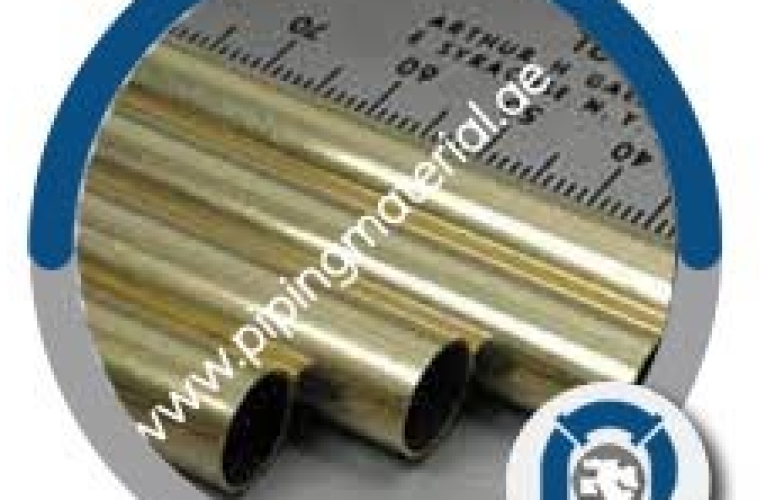
1. Is brass pipe measured by ID or OD?
Most brass pipes are measured by their outside diameter (OD). The outer diameter is the length across the pipe at its widest point. It is the standard measurement for determining the size of a pipe and whether or not it will work with fittings and other parts.
Also, it’s essential to know how the pipe’s inside diameter (ID) and outside diameter (OD) relate to each other to figure out flow capacity and pressure drop. The inside diameter of a brass pipe is the spacing across the pipe at its narrowest point. This number is used to figure out how much fluid can flow through the pipe.
The wall thickness, the distance between the inside and outside diameter, shows how the inside and outside diameters of a brass pipe correspond to each other. It’s essential to consider the wall thickness of a brass pipe because it affects the pipe’s strength and rigidity, the flow of fluids, and the pressure drop.
When choosing brass pipes for a specific use, it is essential to consider both the outside diameter and the inside diameter to make sure they are the right size and the wall thickness to make sure they are strong enough and work well enough.
2. What is brass pipe used for?
Brass pipes are often used in many industries and applications because they are durable, resistant to corrosion, and can withstand high temperatures. Some ways that brass pipes are used are:
The plumbing system: Because brass pipes are resistant to corrosion and last long, they are often used in plumbing systems to move hot and cold water and gas.
HVAC systems: HVAC (Heating, ventilation & air conditioning) systems use brass pipes to move hot and cold air because they can handle high temperatures and pressures.
Automobile systems: Brass pipes are used in car systems like fuel and cooling systems because they don’t rust.
Industrial uses: Due to their resistance to corrosion and durability; brass pipes are used in many industrial processes, such as making chemicals, food and drinks, and oil and gas.
Decorative uses: Brass pipes can also decorate things like railings, furniture, and building details because they look nice and can be shaped into elaborate patterns.
Brass pipes are often used in a wide range of situations because they are solid and resistant to corrosion. Finding reliable brass pipe suppliers is essential to ensure that your products are of high quality and meet the needs of different industries.
3. What are the types of Mild steel pipe?
Mild steel pipes are often used because they are cheap and easy to build. Here are some common kinds of mild steel pipes:
Seamless pipe: A seamless pipe is made from a solid round piece of steel that is heated and pushed through a die to make a pipe with no seams or welds. Seamless pipes are often used in high-pressure situations because they can handle more pressure.
Welded pipes: A flat steel plate is rolled and welded together along the length of the pipe to make a welded pipe. Welded pipes are often used in low-pressure situations. There are different ways to weld them, such as electric resistance welding (ERW) and submerged arc welding.
Spiral welded pipes: A spiral-shaped steel strip is rolled and welded along the length of the pipe to make a spiral-shaped spiral-welded pipe. Spiral-welded pipes are often used for pipes with a large diameter, and they use fewer materials than longitudinal-welded pipes.
ERW pipe, or Electric Resistance Welded pipe: An ERW pipe is made from a flat steel plate rolled, and electric resistance welded along its length. ERW pipes are usually used in low-pressure situations and come in various shapes and sizes.
Black steel pipe: Black paint is put on the outside of a steel pipe to protect it from rust and corrosion. Pipes made of black steel are often used for low-pressure applications and to carry water.
Choosing a reputable and reliable Mild steel pipe suppliers is essential to ensure the quality & consistency of the mild steel pipes.
4. Which pipe is better, GI or MS?
The choice between Galvanized Iron (GI) and Mild Steel (MS) pipes depends on the application’s needs and how they will be used. Both GI pipes and MS pipes have their pros and cons:
The benefits of GI pipes:
Corrosion resistance: GI pipes have a zinc layer on them, making them very resistant to rust and corrosion.
Durability: GI pipes are solid and last a long time, which makes them great to be used outside.
Benefits of MS pipes:
Cost-effectiveness: MS pipes are cheaper than GI pipes, which makes them a good choice for some applications.
Weldability: MS pipes are easier to weld and create than GI pipes, so they are a good choice that needs to be changed or welded often.
Disadvantages of GI pipes:
Cost: GI pipes cost more than MS pipes, which makes them less cost-effective for some uses.
Weldability: GI pipes are hard to weld and make, making them less suitable for applications that need to be changed or welded often.
Disadvantages of MS pipes:
Corrosion resistance: MS pipes are not coated, so that they can rust and corrode. It makes them less suitable for use outside.
5. Are brass pipes imported into Saudi Arabia?
Yes, brass pipes are imported into Saudi Arabia. To meet the needs of its construction and manufacturing industries, the country imports a wide range of industrial products, such as brass pipes. The number of brass pipes Saudi Arabia imports may be affected by local demand, price, and the number of local suppliers.

